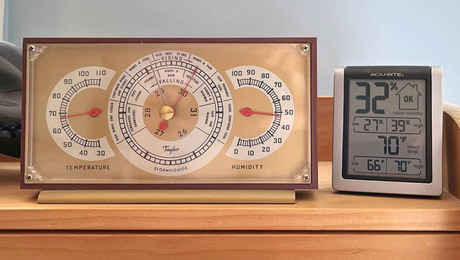How to lay engineered flooring over new basement radiant slab?
Looking ahead to when we pour our basement radiant slab in our newly constructed home. I was wondering what is the best way to install engineered flooring over top? The slab is 4″ thick over 3″ styrofoam and poly sheeting.
The poly is supposed to be water tight (for the BI). Styro on at least 8″ of good crushed granular. Perimeter drains wrapped in filter fabric so slab should be “dry”.
I’d like to have a bit of give in the floor rather than polyurathane it to the slab. That probably means thin sleepers (3/4″ plywood?)
Thanks
John


















Replies
I just put down a floating type floor with engineered wood in my basement and I love it. You certainly do need to install the 6 mil vapor retarded (plastic sheets-don’t have to be black); this will help keep any moisture coming up from the slab to move to the sides and not get trapped beneath the floor. Make sure the edges of the vapor retarder run up and around the floor at the perimeter and that there is enough room so there is a chance for the floor to move and to allow moisture to escape. As far as the bubble underlayment, I chose to use a closed cell foam that came in a 3’ wide sheet. You do need some type of cushion beneath a floor like this, the thicker the more comfortable.
New basement slab and radiant slab both will throw out a lot of water during curing and afterwards. I would let it cure, then heat, vent or dehumidify until the slabs pass plastic sheet taped to floor moisture test. This could take months.
What kind of engineered floor are you using? Solid stock, veneer on plywood, plastic laminate?
You can screw plywood over the slab, but you have to be absolute about where the radiant pipes go. Take a photo of the entire floor with the pipe laid, and closeup of sections with the ruler as reference. Pipe must be installed with later flooring in mind.
Laminate floating would be safer, then veneer, although laminate is more slippery. I would not use sleeper or solid floor. If floor is small enough, use one sheet plastic (thickest you can find) to cover the entire floor or join sheets using gorilla tape. Then use basic cushion rolls. You don't want thicker rolls to block the heat.
If you can still change the plan, I would put down extra insulation panels (headroom allowing), then use ply sheething that comes ready grooved for radiant pipe, then floating floor. There is a down side to this. You are putting in a lot of organic material that will attract mold. If you have humid summers or seasons, you need to use the dehumifier.
John
gluing the floor to the slab will give better heat transfer than floating it and give a better floor too
We use Mannington on all our concrete glue-downs
The radiant slab ranch house we built about 4 years ago is still going strong with no complaints about the Mannington floor
the glue is super strong...
biggest problem we find is renting a 100lb roller... leaning against the wall in the pic
What is that pink paper? Is the photo of a glue down application or just the 100# roller?
Thanks
John
after
we glued down the floor we covered it with rosin paper to protect it
so.. the pink paper was the previous day's work
we also laid cardboard over the rosin paper for more protection